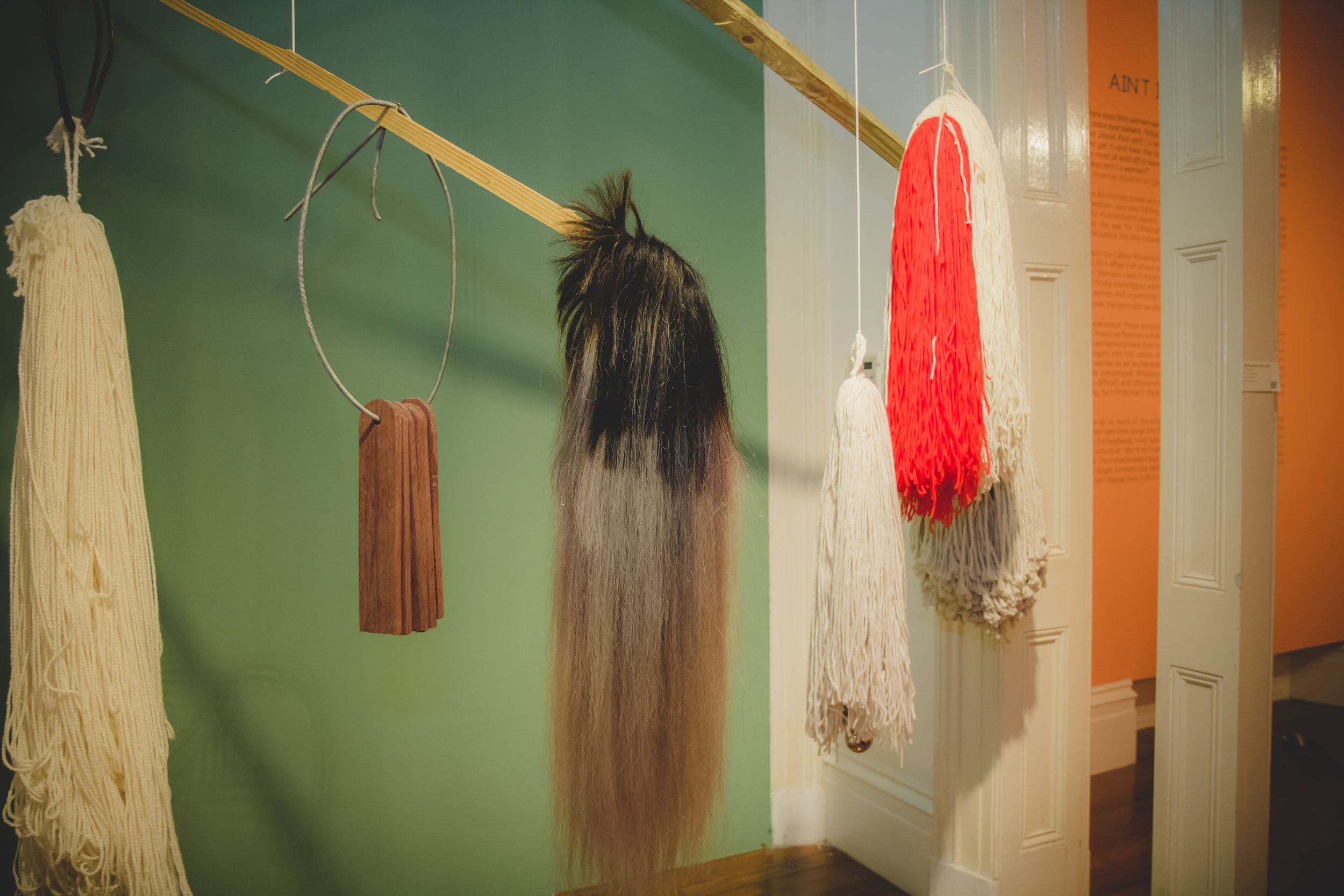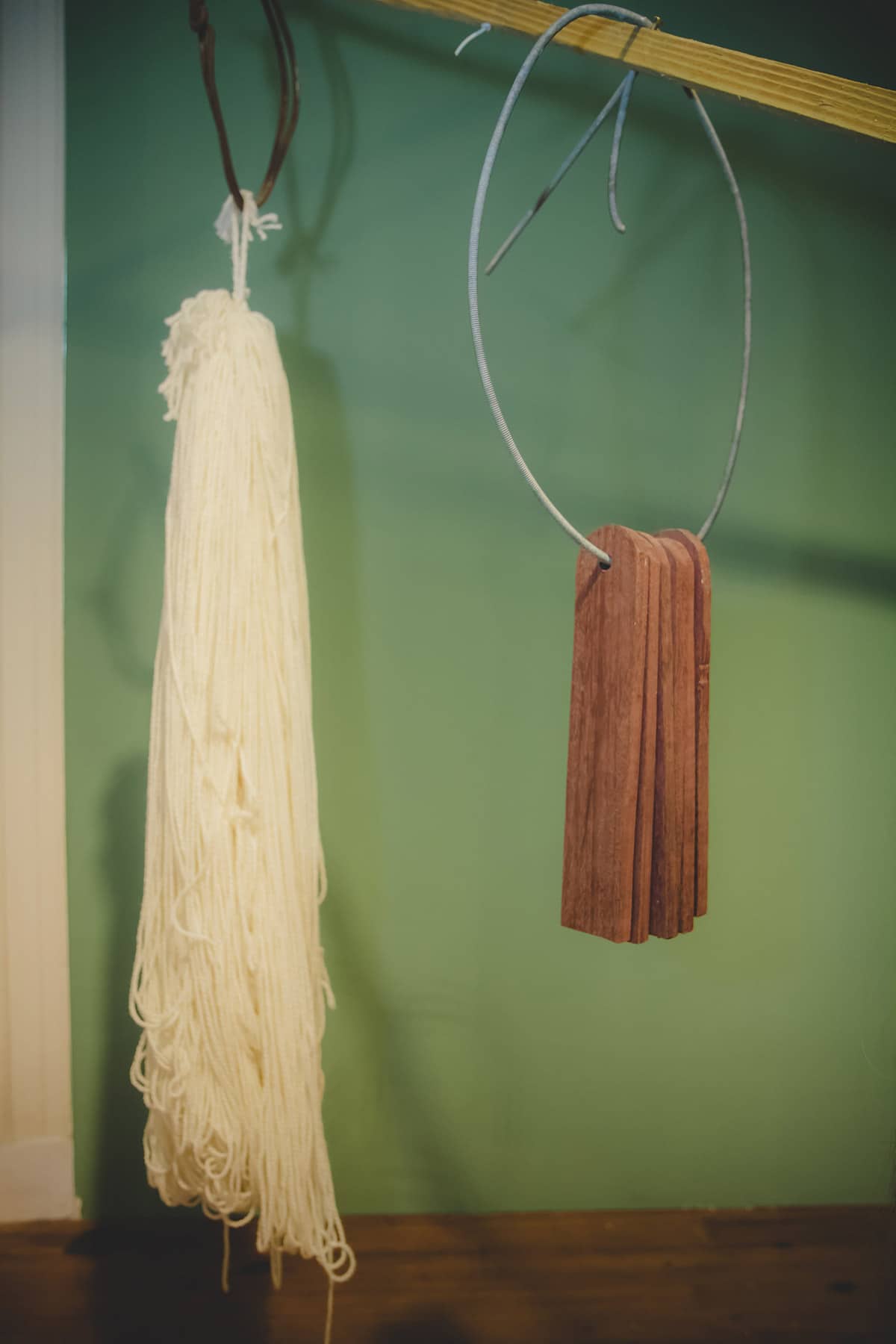
By Natalie Willis
Art is inquiry. Plain and simple. It should open up more questions and conversations than answers, because sometimes the questioning is precisely what we need. We need a chance to shake up our way of seeing things, of taking things for granted, of taking things as “default”. Much of Tessa Whitehead’s work takes us along these lines of flight and paths of thinking, and Something About Failure (2018) makes us question just that.
“Something About Failure” (2018) by Tessa Whitehead as seen in the current Permanent Exhibition “Hard Mouth: From the Tongue of the Ocean” on view at the NAGB.
For Whitehead, the work represents a place of ‘not-knowing’, of being ‘in-between’ right and wrong, it is a work that is ‘not quite right’ and for that it offers rich ground for thinking of what makes art, art. “The title followed me from a joint exhibition with another artist. I forever had a sense that narratives of success and failure sit so closely together that the delineation is pretty confusing or confounding even. I think it’s because the definitions of success and failure are so completely intimate.” The work does indeed feel quite intimate, and for onlookers it feels entirely feminine, though the intentions of the artist were not to make work dealing with this specifically in the sense of feminist activism – though we can’t help but read this in of course.
“The uninhabited shape and weight of the mops, hair and threads have a feeling of relenting. I think the act of relenting indicates a sense of relentlessness. I use the materials because of their form and function rather than a kind of gender. It isn’t pointedly about femininity but it is about me, and I am a woman.” There’s a trace of Whitehead, her mind and her thoughts, the thinking process in this arrangement – the mops that look like wigs with no one wearing them, an actual wig with nobody wearing it. But for those of us looking at this gently oscillating mobile of wigs, mop, and fishing line it brings to mind childhood, femininity, and indeed loss. In some senses it looks like the physical embodiment of the inner-child of adulthood, awkwardly swaying and unbalanced, teetering.
There is a tentative kind of playfulness in looking at the object itself, and indeed it has tempted many a visitor to touch – despite the very clear, authoritarian museum instruction to not do so! It appeals to some almost human-primal compulsion – which we can imagine Whitehead engaging in herself in her various constructions and arrangements of this work in-studio. There is a playfulness in the “failure” implied in the work, a recklessness even, that stirs in the audience upon looking.
“In regards to failure again, I try to allow for the objects I make or things I have assembled to have the option to fail at the objective of being art. I hope instead they might be something more, something more undecided and visceral. I know this isn’t a tested thing or something quantifiable, and I know that of course sometimes things have to be art as a way in, or to give us a way to make sense of something else or another concept. But there’s something about the failure of these objects to exist within a certain parameter that I try to allow for, especially within this sculpture, and that uncertain space is something to try and achieve. I’m not even sure if there’s more failure within that idea in itself.”
There was something of a test of failure and success for the museum as well, in offering up this work that very clearly challenges what we in the wider public might consider to be a work of art and certainly challenging what we think Bahamian art to be. As part of the current Permanent Exhibition, “Hard Mouth: From the Tongue of the Ocean”, Whitehead’s assemblage of wood, textile fibers, hair, and washing line acts as a connecting point between the “Biggity” gallery (depicting moments of political critique in Bahamian art) and the “Ain’t I A Woman” gallery (giving us a moment to consider the representations of women here). It provides a visual bridge of sorts between spaces. In this context, Something About Failure (2018) gives us pause to think of political failings, how we have failed women, how we have failed ourselves, but also in taking Whitehead’s title and process into consideration, how personal failures can be some of the most formative and key moments for change in our lives – however intimate or public they become.
The placement of this work within “Hard Mouth” was a thermometer for museum to test the waters of the minds of our audience. After getting you, our ever trusting and challenging audience, quite accustomed to engaging with the easy-to-grasp beauty of Jace McKinney’s “Where is he coming from, where is he going?” – more affectionately known as the “blue junkanoo man” by children touring the previous Permanent Exhibitions.
This was a challenge of sorts, to place Whitehead’s very contemporary work about process and about the nature of the art object, in the place its glittered and deceptively beautiful predecessor held for so long. McKinney had us question our nationalism by drawing us in with beauty, but Whitehead has us questioning what art is and can be at all in our context. More lines of inquiry arose among us: “Will people “get it”?” “do you think people will like something this contemporary?” And the answer was simple, trust your audience.
Children with their parents instantly accept the piece – after an exchange of looks of course – and immediately the conversation moves to domesticity, chores, cleaning, hair, washing line, constructions of necessity – all things within our everyday that give us a keyhole through which to enter the expanse of meaning of this work that intentionally had nothing to do with any of these things.

Hailed as one of the greatest painters of our time, German painter Gerhard Richter had some choice words and notes on the matter of art making: “I am the one who has to decide what they should ultimately look like, the making of pictures consists of a large number of yes and no decisions and a yes decision at the end.”
Is it a failing on the part of the work or artist to have an imbalance between their intention and our interpretation? Of course not. Is this merely the way that art works? We find ourselves laying our own meanings and experiences into work by people whose lives are entirely different to our own, or similar to our own, but we bring ourselves to it in any case – and that space between us, the artist, and the work is where the magic lies.
